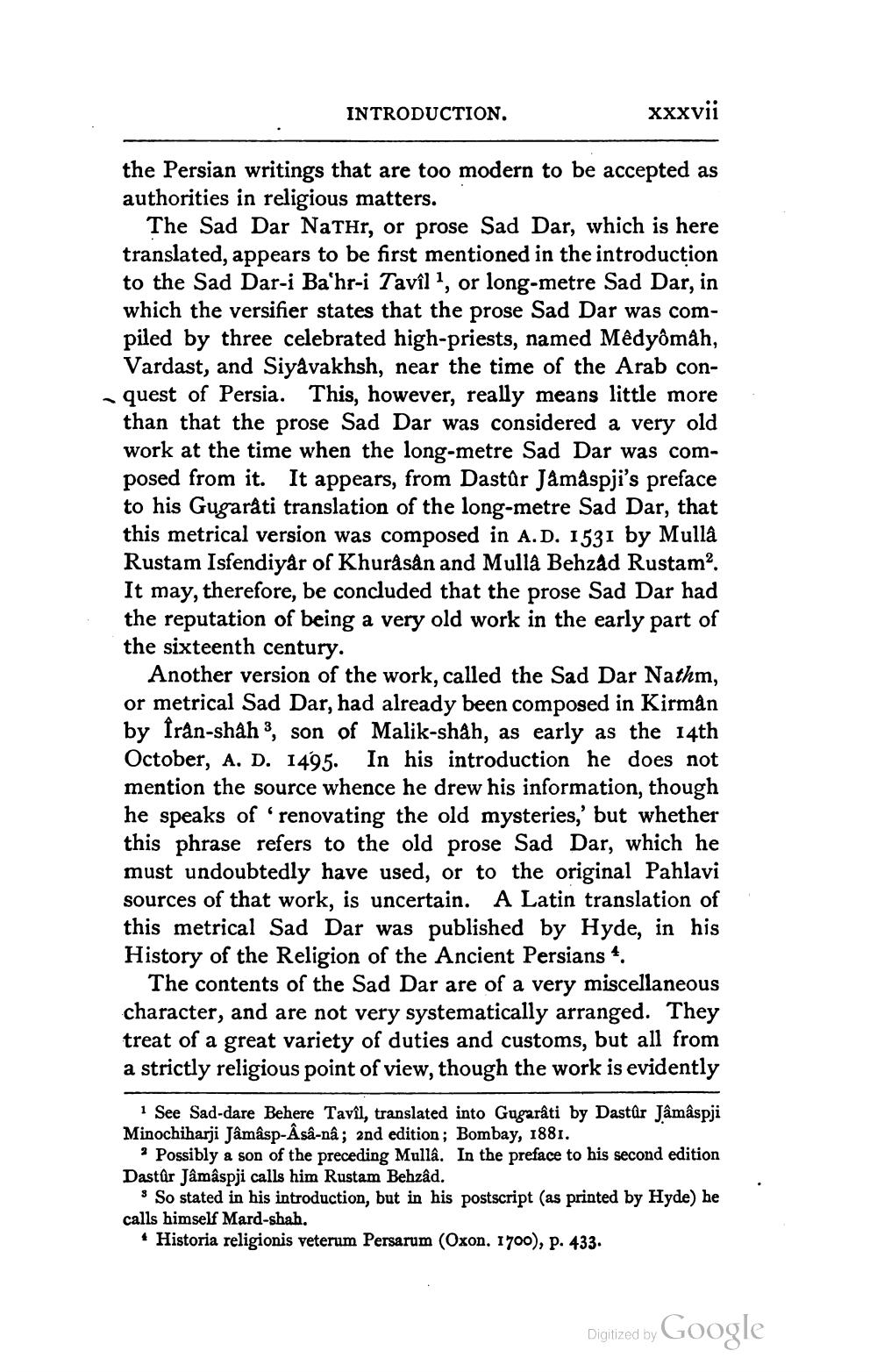________________
INTRODUCTION.
xxxvii
the Persian writings that are too modern to be accepted as authorities in religious matters.
The Sad Dar Natur, or prose Sad Dar, which is here translated, appears to be first mentioned in the introduction to the Sad Dar-i Ba'hr-i Tavîl 1, or long-metre Sad Dar, in which the versifier states that the prose Sad Dar was compiled by three celebrated high-priests, named Mêdyômah,
Vardast, and Siyavakhsh, near the time of the Arab con- quest of Persia. This, however, really means little more
than that the prose Sad Dar was considered a very old work at the time when the long-metre Sad Dar was composed from it. It appears, from Dastûr Jåmåspji's preface to his Gugaráti translation of the long-metre Sad Dar, that this metrical version was composed in A.D. 1531 by Mullâ Rustam Isfendiyâr of Khurasan and Mulla Behzad Rustam. It may, therefore, be concluded that the prose Sad Dar had the reputation of being a very old work in the early part of the sixteenth century.
Another version of the work, called the Sad Dar Nathm, or metrical Sad Dar, had already been composed in Kirman by Iran-shah, son of Malik-shåh, as early as the 14th October, A. D. 1495. In his introduction he does not mention the source whence he drew his information, though he speaks of renovating the old mysteries,' but whether this phrase refers to the old prose Sad Dar, which he must undoubtedly have used, or to the original Pahlavi sources of that work, is uncertain. A Latin translation of this metrical Sad Dar was published by Hyde, in his History of the Religion of the Ancient Persians 4
The contents of the Sad Dar are of a very miscellaneous character, and are not very systematically arranged. They treat of a great variety of duties and customs, but all from a strictly religious point of view, though the work is evidently
1 See Sad-dare Behere Tavil, translated into Gugarâti by Dastûr Jâmâspji Minochiharji Jâmâsp-Asâ-nâ; 2nd edition; Bombay, 1881.
* Possibly a son of the preceding Mullâ. In the preface to his second edition Dastûr Jâmâspji calls him Rustam Behzâd.
: So stated in his introduction, but in his postscript (as printed by Hyde) he calls himself Mard-shah.
* Historia religionis veterum Persarum (Oxon. 1700), p. 433.
Digitized by Google




